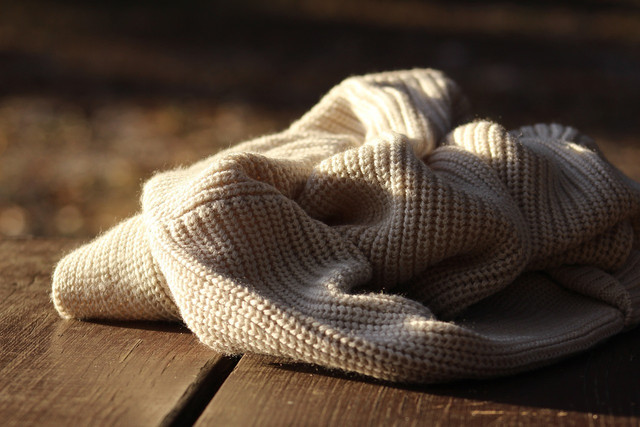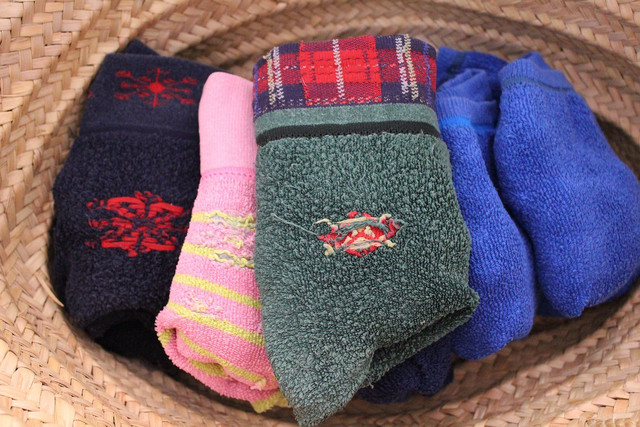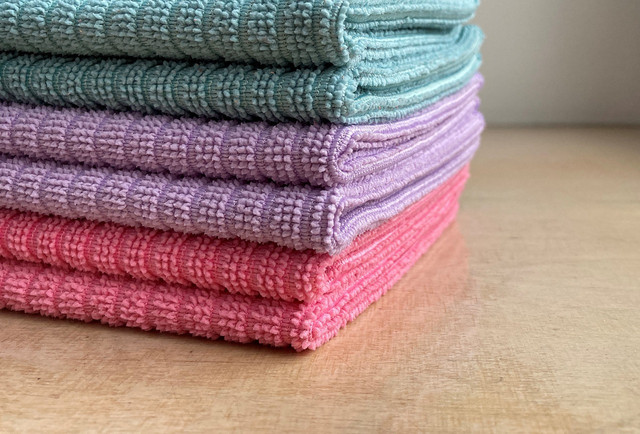Avoid wasting heat and money this winter by following our step-by-step instructions for DIY door draft stoppers. Make your doors and windows draft-proof in no time.
This winter, many people are trying to keep warm without electricity by stocking up on hot water bottles, DIY heating pads, and extra thermal layers to keep costs down. Since draft-proofing your home is one of the best ways to save energy, now is the perfect opportunity to learn how to make a DIY door draft stopper to prevent cold air from entering under your doors and windows. However, there is only so much a draft stopper can do to help. For the best money and energy-saving results, see our tips on how to identify and fix the cause of a persistent draft.
Since our DIYs can be made from things you probably already have around your home, they won’t cost you a dime. You don’t need to know how to sew to make some of our DIY door draft stoppers, but it’s a bonus if you do.
Stuffing
If you don’t already have some spare stuffing, you can source some from any old pillows you have on hand or use your cabbage stash if you have one. “Cabbage” can include any offcuts from fabric and yarns that are too small to be made into anything new, as well as :
- laddered pantyhose
- old clothes cut up into ribbons
- unraveled knitted sweaters
- odd socks
If you don’t have any spare fabric on hand, you can also use:
- fine gravel
- rice
- lentils
- styrofoam packing chips or cut-up old pool noodles
- scrunched up newspapers
As a general rule of thumb, the smaller the stuffing “bits”, the more the draft stopper stops. When using stuffing such as gravel, rice, or lentils, it’s advisable to place them in an old pantyhose leg before stuffing them inside the fabric part of your DIY door draft stopper. Bear in mind that you will need a lot of stuffing, and it might not be economical for you to purchase rice or lentils explicitly for this purpose.
1. Duvet



(Foto: CC0 / Pixabay / congerdesign)
This DIY draft stopper is ideal for large drafts against doors that are rarely opened since this is a very bulky option. However, it’s a great practical use for summer duvets and a quick fix if you don’t have sewing skills or stuffing lying around.
Materials:
- duvet
- ribbon or strings
Instructions:
- Roll up the duvet as tightly as possible, you may need an extra hand to help.
- Tie tightly with ribbon or string in multiple places.
- Place along the bottom of the doorway.
You can also hang a duvet or thick curtain from your door frame to block out drafts from all around your door. You can do this using furniture tacks or by installing a curtain rail above the door that’s causing the draft. Once you’re finished with it, make sure you wash your duvet properly.
2. Pants or Sweaters



(Foto: CC0 / Pixabay / StockSnap)
Do you have an older pair of pants or a moth-eaten sweater? Rather than cutting the legs off to make shorts or unraveling the sweater, get a bit more warmth out of your clothes by using them as DIY draft stoppers.
Materials:
- Old pair of pants or a sweater
- Elastic bands
- Ribbons (optional)
- Stuffing
Instructions:
- Turn one leg inside the other if using pants, or the rest of the sweater inside one of the arms.
- Pad out with extra stuffing.
- Secure ends with elastic bands and tie a ribbon over top of them to hide them.
We recommend using elastics over sewing as this way, if the stuffing gets flattened or gets wet, it’s easy to take it out, replace it, or fluff it up. It’s also much easier to wash.
3. Odd Socks



(Foto: CC0 / Pixabay / Counselling)
Do you refuse to throw away odd socks, socks with holes in, even the socks your children have grown out of? If you don’t want to darn socks, find other things to do with old socks. This project is not only fun to sew, but it is also fun to reuse something that would have otherwise been thrown away.
Materials:
- Socks
- Sewing machine
- Stuffing
Instructions:
- Pick out the most fetching and complimentary socks with the least number of holes.
- Cut open the toe end of each sock.
- Sew raw edges together inside out until the sock snake measures about 4 cm longer than the length of your door or window.
- Sew one end closed with a 2 cm seam and turn right side out.
- Fill with your choice of stuffing.
- Sew the other end closed.
If you need to wash this draft stopper, you will have to un-stitch one end to remove all the stuffing. If you have enough time and the materials to hand, you could also create a button fastening or a Velcro one.
4. Old Towels



(Foto: CC0 / Pixabay / eggnukes)
This one is very similar to the duvet method; however, this draft stopper is much less bulky and can be used in any part of the home. It also leaves your summer duvets free for extra layering on your bed if you need it.
Materials:
- Towels
- Ribbons or string
- 2×4 lengths of wood or dowel (optional)
Instructions:
- Roll up your towel very tight.
- Secure with ribbon or string.
- Place against the draft.
Alternatively, you can also wrap multiple towels around lengths of wood wide enough to cover the entirety of the gap you want to stop the draft from coming through. The added weight of the wood will help keep the cold air out.
5. Pillow Case



(Foto: CC0 / Pixabay / lenahelfinger)
You can make a DIY draft stopper with old bedding by using a pillowcase you don’t need anymore. The easiest way to make this is not to sew it, but you will get a nicer finish if you do.
Materials:
- Old pillowcase
- Stuffing
- Sewing machine or need and thread (optional)
- Ribbons or string
Instructions:
- Fill a third of the pillowcase with stuffing, placing it along the longer edge of the pillowcase.
- Either sew up the opening or fold over the excess fabric before rolling the stuffed part and tying it with a ribbon or string.
- Place against the draft
6. Knitting



(Foto: CC0 / Pixabay / elizabethkeckert)
A knitted draft stopper is the ideal item for a warm home, helping you stay cozy in style. Thanks to its simplicity, this is a great first project for anyone learning to knit. It is also possible to make this pattern using a 20-30 peg loom if you have one. This is a safer option for attempting this project with very young children.
Materials:
- Size 4 mm – 6 mm size needles
- Double knit to bulky yarn
- Knitting sewing needle or crochet hook
Instructions:
- Cast on roughly 30 stitches.
- Knit until the piece measures about 2 cm longer than the width of the door or window. Cast off.
- Hand-sew the long edges together and close at one end.
- Turn right side out and fill with your choice of stuffing.
- Close the open end with hand stitching or with an alternate closure method (see above).
Read more:
- The Best All-Natural DIY Air Freshener
- Is Wool Vegan? Sustainable Options for Knitting
- How to Make Hand Warmers: Step-By-Step Instruction for Beginners
Do you like this post?







